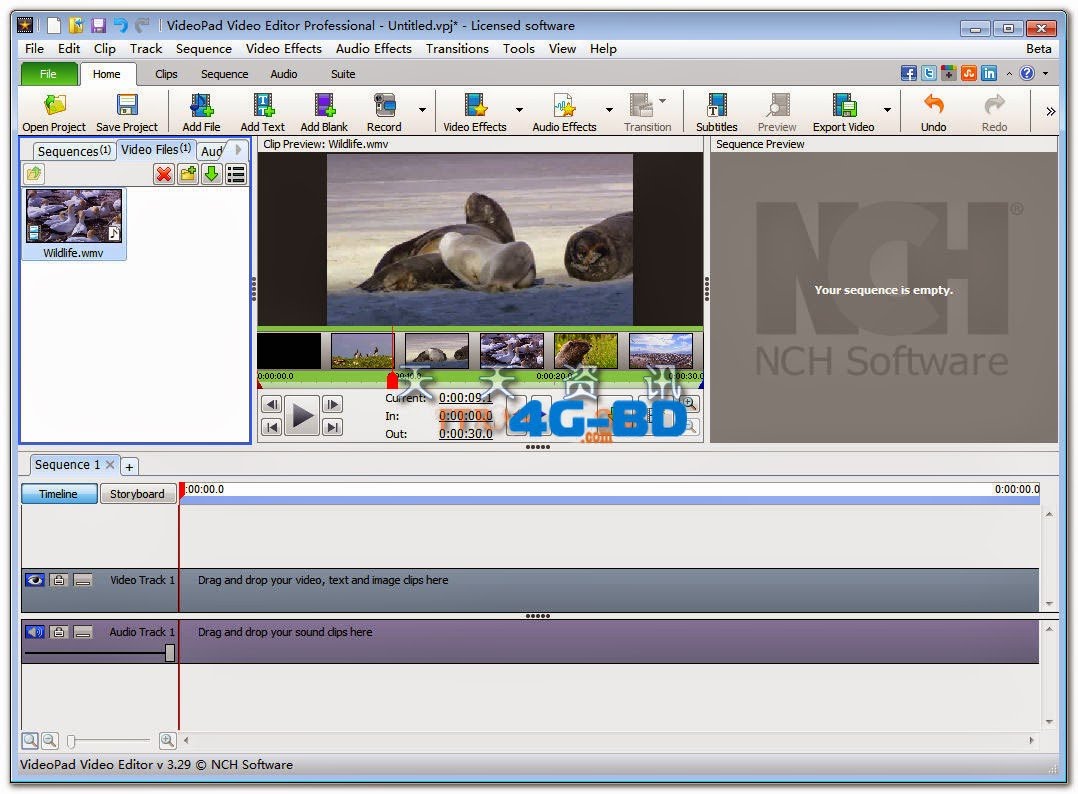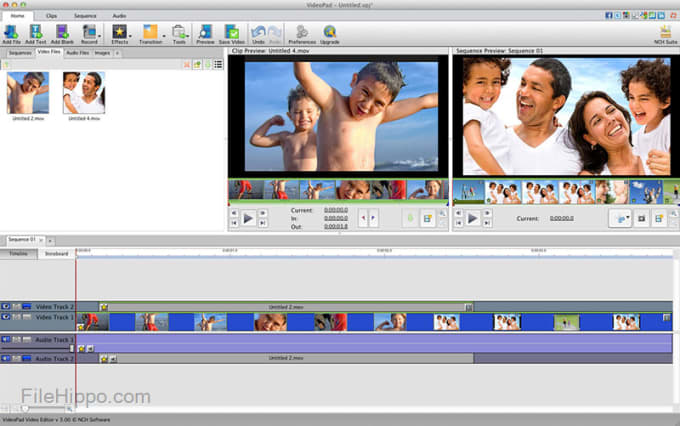

- #VIDEOPAD VIDEO EDITOR FOR MAC HOW TO#
- #VIDEOPAD VIDEO EDITOR FOR MAC MP4#
- #VIDEOPAD VIDEO EDITOR FOR MAC LICENSE#
- #VIDEOPAD VIDEO EDITOR FOR MAC MAC#
- #VIDEOPAD VIDEO EDITOR FOR MAC WINDOWS#
In normal cases Mac users just need to simply drag and drop the target app to the Trash and then empty the Trash to perform the standard uninstallation.
#VIDEOPAD VIDEO EDITOR FOR MAC WINDOWS#
Uninstalling applications in macOS/Mac OS X is quite different from that in Windows operating system. Things you should know about Mac app removal:

#VIDEOPAD VIDEO EDITOR FOR MAC HOW TO#
How to uninstall VideoPad Free Video Editor on Mac computer? If you encounter problem when trying to delete VideoPad Free Video Editor as well as its associated components, read through this removal tutorial and learn about how to perfectly remove any unwanted applications on your Mac. It’s priced similarly to other editing apps in the same category, and while it’s hard to compete against apps such as Shotcut and DaVinci Resolve that give their services away for free, the wealth of tutorials available for VideoPad, along with its clear interface and the ease with which the app can be learned, count for a lot in today’s marketplace.How Can I Uninstall VideoPad Free Video Editor from My Mac
#VIDEOPAD VIDEO EDITOR FOR MAC LICENSE#
Pay for the Master’s edition, and you get a lifetime license that covers future updates, which is in itself a valuable thing these days. If, however, you need a video editing app that treads lightly in terms of its hardware requirements (including an iPad version), can deal with many different video formats including 360-degree and H265, and which is simple enough to use on location shoots, then VideoPad starts to look like a better choice. There’s no multicam support, and even the audio editor is in a separate app, so if those matter to you you might want to look elsewhere at things like Adobe Premiere Elements. It’s got a decent level of functionality too, with the ability to place logos on your video, add backgrounds to greenscreened footage, effects, transitions, and animation. What you get with VideoPad is an app that will import just about any format that you care to mention, and which will run on just about any computer. This could work against you in future if you graduate to a different application, as they’re all very different, but using VideoPad to learn the basics will get you started in editing quickly. Thanks to the simplicity of its interface you can pick it up as you go along, and once you’ve got used to editing in VideoPad you can become extremely fluent, opening and closing windows and knowing precisely where everything is. A little tweaking afterwards may be necessary, but it’s faster than typing them all out by hand. There’s also voice recognition for subtitles, which while not 100 percent accurate does a decent job as long as your audio is clear. The timeline accepts both, enabling Ken Burns-type effects where the camera pans across a still. There are also features within the app to help speed up your workflow, such as the way it can sort your video footage and still images into bins, making sure you don’t try to use a still on the timeline when you meant to drag in a video clip. Videopad: SpeedĪs it has low system requirements, VideoPad runs quickly on modern hardware. It doesn’t insist on putting a watermark on your footage when it exports it, however, which is a mark in its favor. It’s a built-in limitation designed to push you toward an upgrade, but annoying all the same.
#VIDEOPAD VIDEO EDITOR FOR MAC MP4#
Note that the free version of the app cannot export video as an MP4 file - the most popular video format on the web. There’s PhotoPad for still images too, although we removed that from our guide to photo editing software. While you have the ability to fade, mix and adjust the volume of a video clip’s audio, if you want to go further you’ll need an external mixer or editor, such as MixPad and WavePad made by the same developer. Proper audio editing unfortunately isn’t a part of Videopad. You definitely don't need one of the best home computers to run it, and that's a big plus. With its relatively low system requirements (at least for the current version) of just a 1.5GHz CPU and 4GB of RAM, VideoPad uses minimal resources on modern systems and should be perfect for running on laptops and Windows tablets in the field. With support for HEVC and 360-degree video, VideoPad should appeal to those making movies with iPhones as well as extreme sports fanatics and VR trailblazers.


 0 kommentar(er)
0 kommentar(er)
